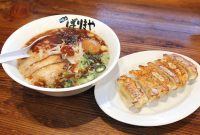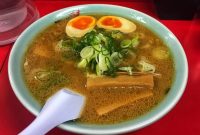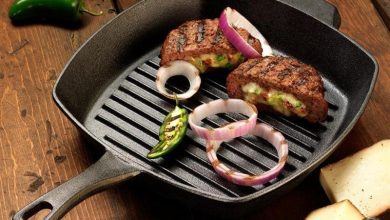Guide to ramen in Japan
these noodles can be found on every corner across the country, and the number of regional varieties seems endless. In the north, in Sapporo, miso ramen is popular, in which a slice of butter is added on top. In the south, in Kagoshima.
Tonkotsu ramen with the addition of chicken and sardine broth is held in high esteem. Japanese ramen originates from the humble food of Chinese immigrants. Now it is an international culinary phenomenon, and chefs create their masterpieces from the best ingredients. Ramen is one of the cornerstones of the Japanese diet. Any gourmet visiting Japan should get to know this dish well.
What is ramen?
The history of ramen noodles began in China. Until now, disputes about how exactly she got from China to Japan have not subsided. It is believed that in 1910, in one of the Chinese restaurants in Yokohama, they began to serve a dish called “layman”.
It was a Chinese wheat noodles in meat or fish broth and quickly gained wild popularity. Soba and udo had already become an integral part of Japanese cuisine by that time, so a cup of noodle soup was not a novelty for the Japanese. The balance of power changed the addition of an ingredient called “kanzuri” – an alkaline solution that gives the noodles a characteristic elastic texture.
Throughout World War II, Japanese ramen continued to grow in popularity. Despite a temporary ban on street food vendors, some of the flour from commercial flour mills has been leaked onto the black market and used to make ramen. By 1950.

restrictions on the distribution of wheat flour were lifted. This coincided with the return of many Japanese who served in the garrisons of China and became addicted to ramen there. Thanks to this coincidence, the popularity of ramen in the country skyrocketed, and the streets of the cities filled with shops with countless new varieties of noodles.
What is ramen like?
There are four main types of ramen that are widely known. The names of three of them correspond to the main condiment – miso ramen, shoo ramen (with salt) and shoyu ramen (with soy sauce). The fourth type is Tonkotsu, ramen in pork bone broth. Any other options for both seasonings and broth bases are possible – for example, chicken.
fish, seafood. They are changed and combined in their own way in each region and in each institution. As a result, the four basic tastes are transformed into an infinite number of local varieties. Locals like to add corn and seafood to the noodles. Hit Fukuoka – hakea ramen. Its distinctive features are a cloudy pork bone broth, a minimum of additional ingredients, as well as “kadam”, the custom of adding noodles to a still hot soup.
So, Tottori is famous for beef bone broth, and in Kataoka they use soy sauce and chicken broth, adding fried chicken and bamboo shoots there. To fully experience the joy of ramen, you need to learn to understand and appreciate its subtleties –
from the degree of rigidity of the noodles to the angle at which the onion is cut. The closest “relatives” of ramen are other dishes that use the same noodles. These are tsukemono, where a rich broth is served separately to dip chilled noodles into it, and mazesoba, a variant without soup, but with a lot of seasonings that form a kind of sauce.

In any quarter of Japan, there are enough shops with ramen. This is everyday fast food, and there are often queues in especially popular establishments. Most of the shops are small, and sitting over a cup for a long time is considered impolite. It is better to leave the room immediately after eating, freeing up space for others.
Most shops offer short menus with a couple of cups to choose from and a separate list of prices for supplements. As a side dish, gyoza or fried rice is most often offered, but sometimes there may be no side dish at all. To speed up the ordering process.
many ramen restaurants operate without waiters. Instead, there are vending machines with buttons for each of the menu items. Insert money, select ramen, toppings, side dishes and drinks. Get a ticket, give it to the chef. A few minutes of waiting – and the order is ready.
You may notice that people at neighboring tables suck noodles into their mouths straight from the cup with a loud smack. This is not considered impolite, moreover, it is a common way to eat ramen. Try it yourself to sip in the same way to fully experience this Japanese tradition. Don’t worry if it doesn’t work out perfectly.
What about instant ramen?
Postwar Japan struggled for some time to recover from the worst rice harvest in decades. In order to feed a hungry nation cheaply, America called for an increase in bread production. However, Momofuku Ando felt that noodles would be a more familiar dish for the Japanese.
” He later founded Nissin, which created the Cup Noodles brand. Fans of instant noodles should visit the Cupnoodle Museum in Ikeda (Osaka Prefecture) or Yokohama where you can create your own Cup Noodles and learn more about this revolutionary food.



